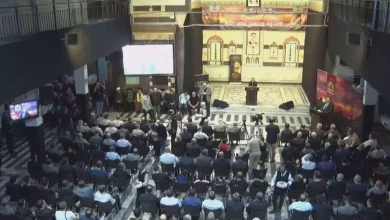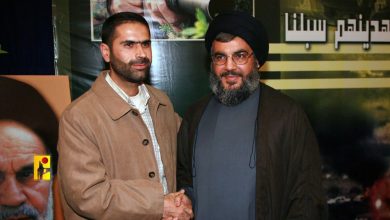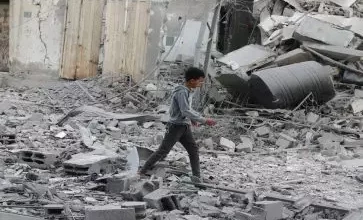Hamas labeled its operation conducted on October 7 as a “preemptive strike” aimed at protecting Palestinians and safeguarding holy sites
A senior official from Hamas has characterized the Operation al-Aqsa Flood, launched by the Palestinian resistance into territories occupied by Israel on October 7, 2023, as a "preemptive strike" aimed at protecting Palestinians and their sacred sites.

Ezz al-Din al-Hadad, a representative of the Military Council of the al-Qassam Brigades, the armed faction of Hamas, stated in an interview with Al Jazeera, headquartered in Qatar, that the operation conducted on October 7 was a reaction to Israel’s heightened blockade of the Gaza Strip, as well as the nation’s strategies for a potential ground incursion into Palestinian territories.
In Gaza, there has been a deliberate intensification of the siege, aiming to inflict a gradual deterioration of conditions on the population, Hadad stated. He emphasized that remaining passive in the face of such a situation was not an option. Furthermore, he highlighted that their principles of resistance have consistently prohibited any neglect or deferment in defending their religious beliefs and figures.
“The launch of Operation al-Aqsa Flood was deemed essential to disrupt the adversary’s calculated strategies through an extraordinary and powerful preemptive attack, aimed at protecting our holy sites, population, and resistance efforts.”
A Hamas representative has accused the Israeli government of trying to “deceive” the resistance movement. The official claimed that Israel was making marginal improvements to living conditions in Gaza, while neglecting the ongoing issues in the occupied West Bank and East Jerusalem.
In a recent statement, spokesperson Hadad emphasized the group’s stance, declaring that the prevailing conditions could no longer be endured. He accused the occupying forces of attempting to placate and weaken their resistance efforts in Gaza by marginally improving living conditions in the region. This strategy, he asserted, only fortified their commitment to pursuing military measures, particularly in light of the ineffectiveness of alternative approaches.
Hadad highlighted the preparations undertaken by Hamas ahead of the operation on October 7, stating that the military leadership had been in constant meetings since October 1st to finalize the attack plans.
In the 24 hours leading up to the designated zero hour, command and control centers were integrated with the central operations hub managing the operation’s execution. Forces assigned to implement the attack were mobilized, and combat support units maintained a heightened state of readiness until 6:30 a.m. on October 7, he reported.
The operation was executed with precision, aligning closely with the maneuver strategies the fighters had been rigorously trained for. At the designated time, coordinated rocket salvos, alongside drone and glider swarms, operated in unison with naval forces. This convergence supported thousands of elite al-Qassam infantry as they penetrated the separation barrier. “By God’s grace, the barrier fell under the efforts of our engineering unit fighters, creating a striking spectacle under what we believe was divine protection,” he further stated.
In a statement, Hadad lauded the recent retaliatory operation, describing it as an “astonishing success.” He highlighted that despite the operation’s extensive scope, opposing forces failed to gather any intelligence, rendering their defenses ineffective against the attacking fighters. Hadad commended the fighters for exhibiting exceptional skill, bravery, and the utmost ethical conduct and responsibility during the operation.
A senior Hamas official has articulated the group’s conditions for cessation of hostilities in Gaza, asserting that the Israeli government, backed by the support of the United States and Western allies, will ultimately be compelled to meet their rightful demands. These include the cessation of military aggression, a full withdrawal from the Gaza Strip, the release of Palestinian prisoners, with particular emphasis on those serving life sentences, the lifting of the blockade, and the initiation of reconstruction efforts.
Since October 7, 2023, Israeli military operations in Gaza have resulted in the deaths of at least 47,000 Palestinians, the majority of whom are women and children, and have left approximately 111,000 others injured. Additionally, thousands are reported missing and are suspected to be trapped under debris.
Israel consented to a ceasefire commencing on January 19, subsequent to not meeting its stated objectives within the blockaded region.
In a widely celebrated development, Palestinians have hailed the recent ceasefire agreement as a significant victory. The truce includes the release of approximately 2,000 Palestinian prisoners from Israeli detention, in return for Israeli captives currently held in Gaza.




